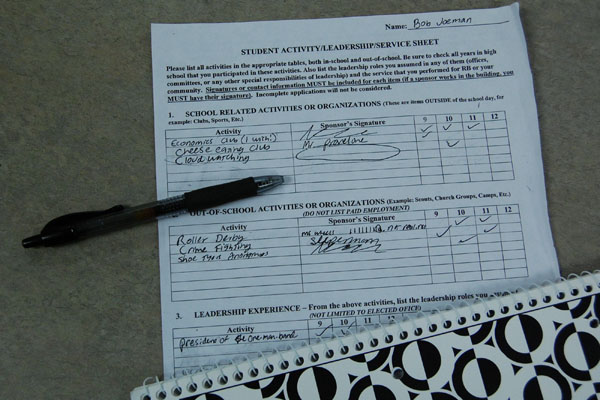Once again, your wild economist returns to attempt to explain RB through an economic lens.
Today’s topic of choice? National Honors Society (NHS).
I’ve been thinking about NHS recently because, like many of you, I have just finished running around collecting signatures and hours and writing an essay on the pillars of Character Counts. I’ve been wondering: Why is it so hard to get into NHS? Why do they want us to do all this running around?
Actually, it can partly be explained through economics.
But in order to understand this, we must first look at some economics thingies known as supply and demand. Everyone say, “Hello, Supply and Demand!”
Demand is basically how much of an item people are willing and able to buy at a given price. For instance, imagine finding a big box of crackers at your favorite store for the price of one million dollars. You almost certainly would not be able to afford them. Probably no one else would, either, and the few who could wouldn’t consider it a worthwhile investment (Other than, perhaps, one single strange rich person). At ten dollars a box, more people will be able to buy the crackers and might think, “Hey, awesome, a box of crackers.” At five dollars, even more people will think it’s a good deal and will buy them. At one cent, lots and lots of people will be able to buy the crackers and will want to because it’s a fantastic deal.
So essentially, as price increases, the quantity of people demanding an item decreases, and as price decreases, the quantity people demanding the item increases.
So if lots of people demand a box of crackers at one cent, why don’t crackers cost that much? That’s because of supply.
Supply is how much of an item the manufactures/sellers are willing and able to make of an item. For instance, if they make a pair of shoes that they can only sell for one dollar, but it took twenty dollars and nine hours to make them, you won’t find many of those shoes in the store. On the other hand, if the shoes could be sold for thirty dollars, they might be worthwhile it to make. If they could be sold for a thousand dollars, everyone would want to make those shoes! Imagine how much profit they would get!
But that won’t work, because of demand.
For supply, as price increases, the quantity supplied will increase as well. When price decreases, the reverse is true. Since demand is the opposite, the two can eventually balance each other out. Ideally, price should be set so that the quantity supplied should equal the quantity demanded, and there won’t be too much or too little of the item in circulation.
But that doesn’t sound anything like NHS, does it? Well, it kind of does.
Think of all the students demanding a place in NHS. The amount of students accepted by NHS is the supply. The price students have to pay to get in is the time they spend running around getting signatures and writing the essay.
If it cost nothing to be accepted to NHS – if students just wrote their names down to be considered – most students would be willing and able to enter. In order for NHS to hold merit under those circumstances, it would have to be even more selective. They would only give a small number of students that recognition. Otherwise, NHS would turn into the We Can Sign Our Name Club, which isn’t quite so impressive on a college application. So the price is low, quantity demanded is high, and quantity supplied is low.
Hmmmm….
Now suppose that it was ridiculously difficult to get into NHS. What if you had to write nine essays, run up a mountain barefoot, invent a new kind of rocket ship, have a 9.0 GPA, and paint yourself purple to be even considered for the honor? A very, very, very small number of people would be able to be considered and most would probably decide that it’s not worth the trouble. So you’d have a very, very small quantity demanded. But anyone who could do that would really deserve the honor, so NHS would offer a larger number of spots to students, because they were more impressive. Perhaps only two of those spots could possibly be filled. In this case, the price is so high that the quantity demanded is low, and the quantity supplied is high.
Now we come to the middle ground, which is where the current applications fit in. Some, but not all, of the students will be willing and able to do the running around necessary to be considered. Some, but not all, of those will be accepted. It is not a perfect equilibrium, but it is much closer than an easier or a harder application would be. Therefore, it is a rather economically efficient application process.
This doesn’t mean, however, that it is easy, fun, or un-stressful.
Curses.
On a lighter note, stay tuned for the next blog, prominently featuring chocolate!


















